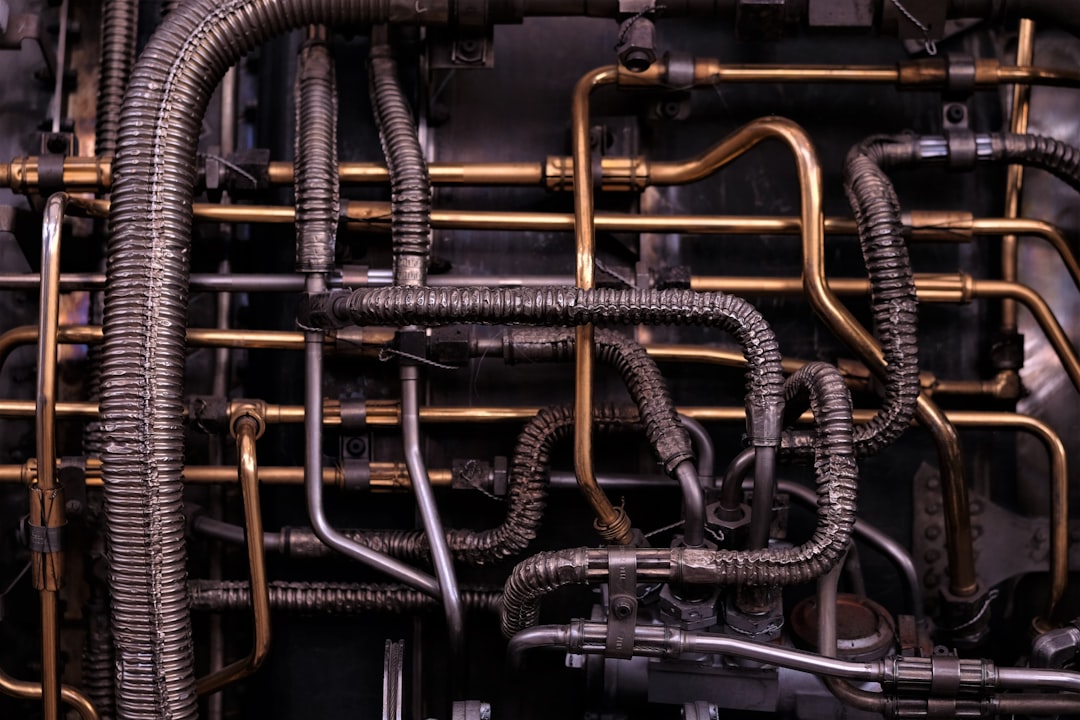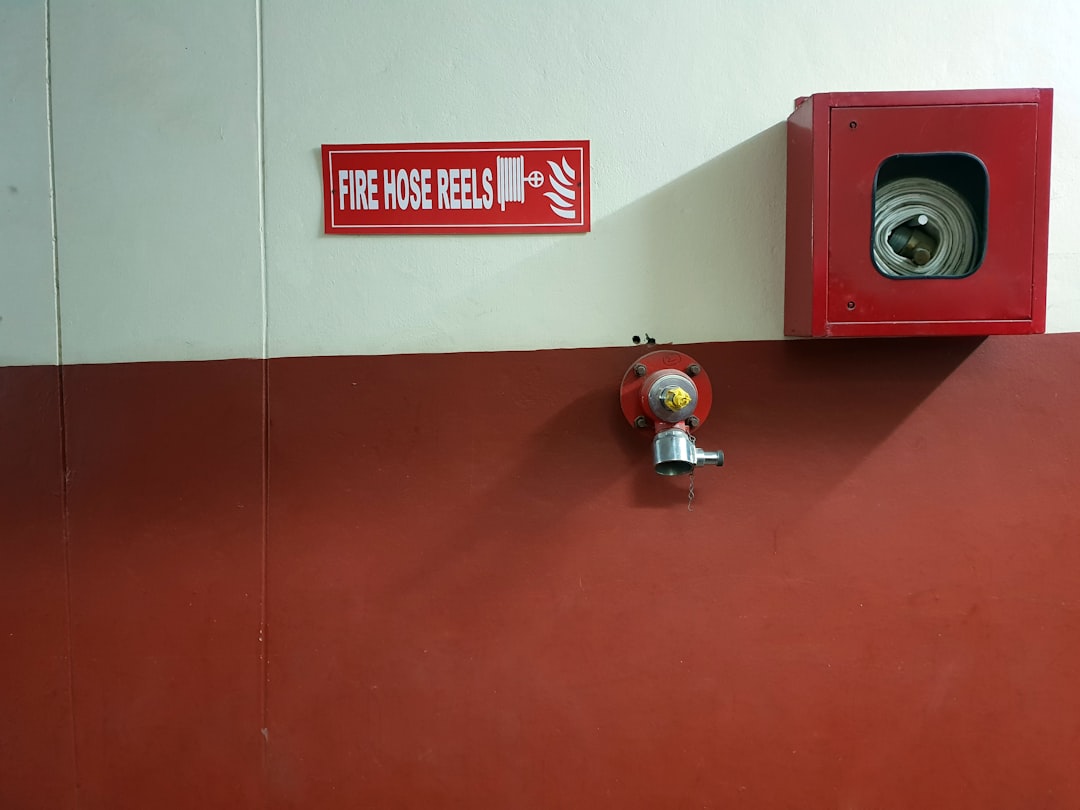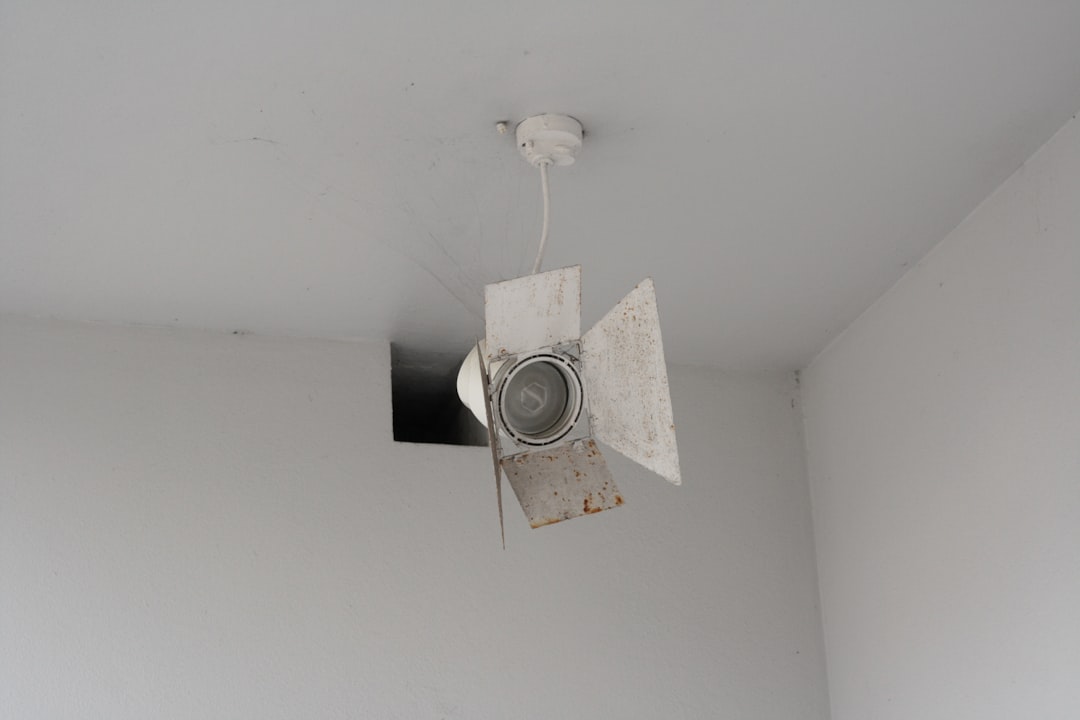

Engage prospects with a scan and streamline customer engagement with FREE QR code marketing tools by Sona – no strings attached!
Create a Free QR CodeFree consultation

No commitment

Engage prospects with a scan and streamline customer engagement with FREE QR code marketing tools by Sona – no strings attached!
Create a Free QR CodeFree consultation

No commitment
Heating system cleaning services play a mission-critical role in ensuring efficiency, safety, and longevity for residential and commercial heating systems. Yet many providers grapple with gaps in tracking high-value prospects and missed follow-up opportunities, which can lead to lost revenue and diminished client loyalty. As HVAC maintenance and furnace cleaning tips become top of mind for facility managers and homeowners alike, new digital tools like QR codes in marketing are streamlining processes that were previously cumbersome and manual.
Today, heating system providers are challenged with not only delivering expert service but also creating seamless, data-driven customer experiences that build trust and loyalty. The key is making every interaction count, including those that go unreported in traditional CRM channels. Small moments like a customer reading a leave-behind checklist or a facilities director glancing at a service sticker can become measurable touchpoints.
By strategically deploying QR codes, heating system cleaning services can address incomplete or outdated customer data, maximize technician productivity, enhance customer journeys, and access granular performance data. This can be done without requiring end users to download new apps or navigate complexity. The result is operational efficiency that supports technicians in the field and powers sustainable growth for HVAC-focused organizations.

Operational bottlenecks in field service often stem from fragmented documentation and a lack of visibility into each customer touchpoint. QR codes bridge the gap between physical HVAC maintenance and actionable digital outcomes. They reduce administrative overhead for technicians, make customer follow-up effortless, and turn analog touchpoints into measurable interactions. If you are still relying on paper intake forms, handwritten service stickers, or untracked brochures, QR codes offer a simple path to smarter workflows. For HVAC teams, HVAC QR codes highlight how these scans improve both customer service and marketing.
Modernizing these workflows does not require you to overhaul existing systems all at once. Start by attaching scannable QR codes to assets you already use: system units, inspection reports, invoices, and vehicle wraps. Use dynamic QR codes so you can change destinations as campaigns shift by season. Then integrate scan data with your CRM to trigger alerts, update records, and track results. With a centralized platform like Sona QR, you can standardize code creation, unify analytics, and automate engagement across your entire operation.
Where manual sign-in sheets and static stickers once resulted in lost information and missed outreach, QR-based digital solutions let teams capture, analyze, and leverage every interaction. With Sona QR or your preferred platform, managers can automate record-keeping, trigger post-service feedback requests, and inform future marketing based on real activity rather than guesswork. Operational excellence begins when field activity is easy to execute, measurable in real time, and directly tied to outcomes.

Heating system cleaning providers face ongoing challenges synchronizing in-person engagement with digital follow-up. A technician may leave a brochure or maintenance checklist behind, yet those touchpoints often do not translate to trackable intent or pipeline. This offline to online disconnect quietly erodes growth. QR codes turn every physical asset into an onramp for action. A QR on an appointment reminder, door hanger, or post-service flyer allows instant booking, feedback, or content access and each scan becomes a measurable signal. For contractor-focused examples, see these contractor QR uses.
Dynamic content is essential in an industry that is seasonal, safety oriented, and service driven. Dynamic QR codes let you update destinations without reprinting materials. You can direct winter scans to emergency call readiness guides, while spring scans promote air duct cleaning or preseason maintenance. The same printed assets can power multiple campaigns over time. For managers, this translates to less waste, consistent messaging, and ongoing relevance.
Analytics complete the picture. QR code dashboards show which materials are working, where engagement happens, and how behavior differs across audience segments. You can see that a code on a furnace access panel produces more service plan upgrades than a code on a generic brochure, or that scans from property managers spike on weekday mornings. This clarity allows you to allocate budget to proven channels, personalize follow-ups, and track impact on retention and revenue.
Finally, QR codes help you support technicians in the field. Instead of asking customers to call a number or type a URL, a technician simply points to a scannable code. The customer can book a filter replacement visit, watch a safety video, or leave a review in seconds. Your technicians save time, your customers have a frictionless experience, and your business collects valuable data at the exact moment intent is highest.
Heating system cleaning operations benefit most from QR formats that minimize friction and maximize data capture. Selecting the right format for the job ensures each scan drives a meaningful action while feeding your CRM with context.
Dynamic QR codes are the default choice for most heating system cleaning workflows. They allow you to edit destinations as offers change, and they support analytics, retargeting, and identity resolution through platforms like Sona QR. Static QR codes are suitable for evergreen resources such as a general help page or a permanent contact card. For assets exposed to heat, dust, or moisture, print on durable, high-contrast labels like stickers and labels and include a clear call to action so customers know exactly what happens after they scan.

Growth often stalls because the business cannot see who is engaging in the real world. QR codes surface those engagements and tie them to specific channels, locations, and technicians, revealing where demand already exists.
Consider your most common offline materials and touchpoints. Service stickers, work order packets, invoices, email receipts, and vehicle wraps all reach real buyers. By printing unique QR codes on each, you transform passive artifacts into active acquisition and retention tools. For example, a maintenance sticker can guide customers to schedule their next cleaning, while a code on a service truck can promote emergency service availability within the neighborhood, all while feeding scan data into your CRM.
By differentiating scans from annual plan reminders versus urgent service flyers, you can prioritize high-intent leads for quick retargeting and reserve slower, educational nurtures for information seekers. Over time, scan patterns highlight where to invest, which offers to repeat, and how to route technicians to the highest-opportunity zones.

QR codes excel when they connect an offline moment to a clear, timely action. Below are proven use cases that align with common interactions in heating system cleaning.
Each of these use cases creates measurable outcomes. Expect faster booking conversion when forms are pre-filled, higher feedback participation when the request is immediate, and improved retention when service history and safety content are always one scan away. Tie each use case to a specific KPI and track improvement over time using Sona QR’s analytics or your chosen platform.
Every scan is a signal that carries context: where the customer was, what asset they engaged with, and what they intended to do. By deploying multiple QR codes across your touchpoints, you can automatically segment audiences and deliver relevant follow-up across email, SMS, and paid media.
Start by mapping your funnel and assigning unique QR codes to each stage. Awareness assets like door hangers and vehicle wraps should have distinct codes from consideration assets like maintenance plan brochures or how-to videos. Conversion assets such as invoices and post-service checklists should trigger strong calls to action like Book your next cleaning or Upgrade to a seasonal plan. As customers scan across multiple touchpoints, you gain a behavioral profile that guides remarketing. For paid media, leverage intent-driven retargeting.
Heating system cleaning services benefit from distinguishing homeowners from property managers, new movers from long-term residents, and facility operations staff from procurement leaders. Your segments should reflect the decision-making dynamics you see in the field. The more precisely you tag scan events, the more relevant and efficient your follow-up will become.
QR codes are the connective tissue that links offline assets with your digital strategy. When used consistently, they unify campaigns across print, field operations, email, SMS, and ads. The goal is to meet customers where they already are, then guide them online with clarity and speed.
For heating system cleaning services, printed collateral and service signage are enduring staples. Vehicle wraps and neighborhood door hangers remain effective for local reach, while invoices and service reports reach customers at the exact moment they are thinking about equipment performance. Layer QR codes across these materials and use consistent CTAs to drive predictable behaviors like booking, feedback, and plan enrollment.
QR codes serve as the offline onramp to your digital marketing engine. With a centralized platform like Sona QR, you can manage all codes, monitor performance, and pipe scan data to your CRM and ad accounts. This creates a durable, measurable pipeline from field impressions to booked revenue.
An effective QR program combines smart strategy, strong creative, and disciplined measurement. Use the following steps to plan, launch, and optimize QR code initiatives that support technicians and delight customers.
Begin by defining one focused outcome. For heating system cleaning services, common goals include increasing preventive maintenance bookings, collecting post-service feedback, enrolling customers in annual plans, or driving emergency service requests through vehicle signage. Pick the use case that aligns with current seasonality and business priorities.
Choose static or dynamic codes based on the need for flexibility and measurement. Most campaigns benefit from dynamic QR codes because they allow destination edits, analytics, and retargeting. Static codes are fine for permanent resources that rarely change.
Strong creative drives scan behavior. Your code should be visually prominent, high contrast, and accompanied by a clear, benefit-driven call to action. Test for scannability in real-world conditions.
Roll out codes where customers and technicians interact most. Quantify expected impressions and align placement with funnel goals. Equip technicians with talking points so they can explain the value of scanning.
Once live, measure performance continuously and iterate. Your analytics should connect scans to outcomes so you can optimize quickly.
A short, focused launch cycle creates momentum. After each sprint, share results with technicians and office staff so everyone sees the impact of small improvements. This feedback loop drives adoption and better customer outcomes.
It is common for heating system cleaning leaders to lack clarity on which materials and activities truly drive revenue. QR tracking closes this gap by connecting each scan to a channel, campaign, and outcome. When scans are properly tagged, you can attribute bookings to specific door hangers, calculate the revenue impact of vehicle wraps, and identify which technician leave-behind generates the most reviews. For the broader strategy behind connecting offline events to outcomes, review offline attribution.
Traditional analytics tools often stop at click-throughs and website behavior. Sona QR and Sona.com extend visibility into the real world. You can capture who scanned, where they were, what device they used, and what they did next. You can also enrich leads in your CRM with scan history so sales and service teams see a timeline of engagement.
When every QR code is a measured entry point, your marketing and operations teams can collaborate around a single source of truth. Field insights feed marketing strategy, and marketing data informs service prioritization. The result is better resource allocation and steady improvements in both customer experience and profitability.
QR programs scale best when they are easy for technicians to use and clearly valuable for customers. Adoption grows when teams see that scans save time, reduce paperwork, and generate positive feedback. Customers scan more when the benefit is immediate and obvious. For additional inspiration in service industries, explore these cleaning operations ideas.
Focus on best practices that align with your most common media types and workflows. Standardize code formats, calls to action, and destinations so that your team does not reinvent the wheel for each campaign. Make automation do the heavy lifting and build in feedback loops to keep improving.
Creative deployment examples fit naturally in this vertical. A QR on a filter access panel that says Scan to reorder your exact filter size reduces guesswork and saves a trip to the store. A QR on a winter door hanger that says Scan for a 15 point heat safety check can drive high seasonal engagement. Use these moments to connect convenience with measurable outcomes.
Heating system cleaning services are evolving quickly, yet the inability to track high-value offline engagement remains a persistent challenge. QR codes solve this by converting every physical surface into a digital entry point and every moment of interest into a measurable action. They empower technicians with tools that save time and reduce admin, while giving customers instant access to the help and information they need.
Here is what an effective QR strategy delivers at scale:
Sona QR provides everything you need to generate, manage, and measure QR codes across your operation. Sona.com extends that capability with identity resolution and multi-touch attribution so you can connect scans to pipeline and closed revenue. You can get started quickly: create your first codes, place them on your highest-traffic assets, and watch as offline interactions become visible, attributable, and optimizable. Start creating QR codes for free.
QR codes have revolutionized heating system cleaning services by transforming routine maintenance into an interactive, data-driven experience. They empower technicians to access detailed service histories instantly, streamline troubleshooting, and enhance customer communication—all while driving customer acquisition and building trust through transparency. Imagine technicians arriving fully prepared, customers receiving instant service updates, and your business gaining valuable insights into service patterns and customer preferences.
With Sona QR, you can create dynamic, trackable QR codes tailored specifically for heating system cleaning workflows. Update service details on the fly without reprinting, monitor scan activity in real time, and link every interaction directly to improved service efficiency and customer satisfaction. No more guesswork—just actionable intelligence that boosts technician productivity and elevates the customer experience.
Start for free with Sona QR today and turn every scan into a seamless service interaction, a loyal customer, and a measurable business advantage.
Cleaning a heating system ensures efficiency, safety, and longevity, reduces emergency calls, improves equipment performance, and enhances customer confidence and transparency.
Heating systems should be cleaned according to manufacturer-recommended timelines and seasonal requirements, often scheduled through preventive maintenance aligned with peak seasons.
Signs include decreased heating efficiency, increased energy bills, unusual odors or noises, and safety alerts such as carbon monoxide warnings.
Choose a service that offers expert technicians, uses modern tools like QR code tracking for transparency, provides clear success metrics, and supports digital customer engagement.
Steps include inspecting the system, digitizing service documentation, cleaning components, replacing filters or parts as needed, and scheduling preventive maintenance.
Costs vary based on service scope and region but can be optimized by using data-driven QR code campaigns that increase booking efficiency and reduce administrative overhead.
You can follow safety instructions linked via QR codes to watch videos on filter replacement, vent clearance, and basic maintenance, but professional cleaning is recommended for thorough service.
Safety precautions include following carbon monoxide awareness tips, turning off power before maintenance, clearing the area for technicians, and adhering to manufacturer guidelines accessed via QR codes.
Efficiency can be verified by improved system performance, lower energy bills, positive technician feedback, and tracking post-service feedback collected through QR code-enabled surveys.
Use Sona QR's trackable codes to improve customer acquisition and engagement today.
Create Your FREE Trackable QR Code in SecondsJoin results-focused teams combining Sona Platform automation with advanced Google Ads strategies to scale lead generation

Connect your existing CRM

Free Account Enrichment

No setup fees
No commitment required

Free consultation

Get a custom Google Ads roadmap for your business






Launch campaigns that generate qualified leads in 30 days or less.
